Your Comprehensive Guide To Different Sapphire Colours
What affects sapphire stone colour?
Sapphire stone colour is primarily determined by the varying levels of ‘trace elements’ in the foundational corundum stone. These trace elements, meaning chemical elements that are only present in very minute amounts, include chromium, magnesium, iron, titanium, and vanadium.
The saturation is also determined by the gem’s clarity; a beautiful, rare colouration can be severely downgraded by heavy inclusions which cloud the stone.
What are the different sapphire colours?

In the following sapphire colour list, let’s dive into how the different colours arise and each sapphire colour’s meaning and symbolism.
Blue sapphire
Let’s start with the most well-known sapphire hue. Blue sapphires range from light teal to dark blue, depending on the amounts of titanium and iron inside them:
- Pastel;
- Cornflower;
- Peacock;
- Velvet;
- Royal;
- Indigo;
- Twilight.
Blue-coloured sapphires represent loyalty, focus, and creativity. These romantic symbolisms lend themselves to blue sapphires often being seen in alternative engagement rings. Because there are so many varieties of blue sapphire, they are considered by some as the least rare sapphire colour.
Pink sapphire
Pink-coloured sapphires are a result of the presence of trace amounts of chromium. This delicate, feminine colouration is often associated with love, compassion, and emotional healing. The differentiation between pink sapphires and red sapphires (i.e. rubies) is quite subtle, and the former can sometimes be considered the latter in certain countries.
Pink sapphires can be subjected to heat treatment to remove any blue tints and make them appear more purely pink.
Yellow sapphire

Yellow sapphires arise from tiny amounts of iron. This sapphire colour ranges from pale corn yellow, to canary yellow, to a whisky yellow that borders on orange. Yellow-coloured sapphires can actually have their tone intensified using low-level radiation, which can occur naturally in the bowels of the earth or through human intervention.
This sapphire variation typically has fewer inclusions, so it appears more transparent and clearer than some other sapphire stone colours. Yellow sapphires are associated with ideas of joy, wisdom, divine grace, and not surprisingly, wealth.
Green sapphire
Like yellow sapphires, green sapphires arise due to trace amounts of iron. Typically, a higher concentration of iron results in a deeper green. Ranging from pale to dark green, notably, they can have various undertones including blue, yellow, and brown. The most common tone is the olive-green tone. Comparative to emeralds for their colour, green sapphires are sometimes called “Oriental emeralds”.
Green-coloured sapphires are dichroic, meaning they show two different colours based on the angle at which they’re viewed and the angle at which light enters the gem. This sapphire variety recalls nature and solidness, often symbolising truth, rebirth, and harmony.
Purple sapphire
This regally coloured variety of sapphires are given their hue by iron, chromium, and titanium. Ranging from pale lavender (which can even look slightly pink) to deep violet. Following blue sapphire, pink and purple also rank highly in price.
You’ll rarely find large purple sapphires. However, compared to other sapphire colours, they commonly exhibit high saturation even without heat treatment. Purple sapphires are associated with healing, intuition, and spirituality.
Padparadscha
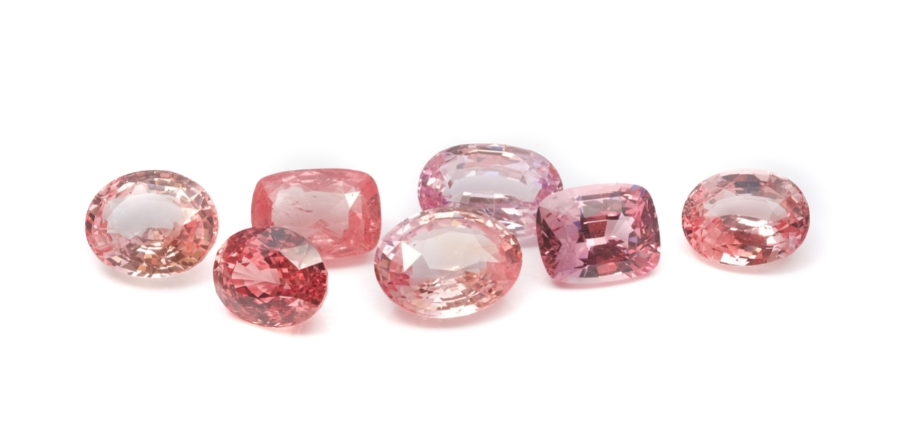
Padparadschas are an especially unique sapphire colour that presents as orange-pink. The colour can appear consistently salmon-like throughout the stone, or with different pink and orange colour zones. This vivid hue, which holds the title of most rare sapphire colour, arises from a combination of iron and chromium in the corundum.
Known by some as the “king of sapphires”, padparadscha sapphires are often associated with spiritual growth and purity of the heart. This sapphire variety is named after an aquatic lotus flower which is the national flower of Sri Lanka. Indeed, padparadschas were originally believed to be native only to Sri Lanka, but have since also been found in Vietnam, Tanzania, and Madagascar.
Due to their extreme rarity, padparadscha stones of high clarity fetch higher prices than most other sapphire colours.
Brown sapphire
Until recent years, brown sapphires were not considered gem-quality minerals. Some have attributed their rise in popularity to the increasing demand for ‘cognac’ or ‘champagne’diamonds, which have hints of brown or yellow, for which brown sapphires can serve as a lower-cost alternative.
Brown-coloured sapphires can attribute their hue to tiny amounts of iron and titanium. They are typically connected to symbolisms of stability, security, and grounding. Not typically set alone, they are sometimes used as accompanying or complementary stones with other, more vividly coloured gems.
Black sapphire
Black-coloured sapphires aren’t truly black – their opaque appearance is due to high amounts of inclusions (which can be internal scratches, external scrapes, or bits of other elements stuck inside the stone during formation) and iron trace elements that prevent light from passing through them, effectively absorbing the light rays. This opaque sapphire variety is associated with protection and releasing of negative energy.
Colourless/white sapphire
Sapphires can also form nearly without colour. Perfectly colourless sapphires do not exist in nature, but get close enough to appear so to the naked eye. These are sapphires that are free of trace elements and chromophores, the colour-causing component in molecules.
Their transparent appearance lends them qualities of elegance and class, leading to the associated symbolisms of purity and focus.
Parti sapphire
Also known as bi-coloured sapphires or polychrome sapphires, these are sapphire stones which clearly show two or more different colours. Understandably coveted for their almost magical appearance, parti sapphires containing blue, green, and yellow colour zones are typically the most desired of this category.
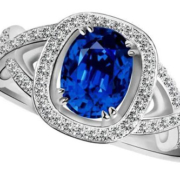
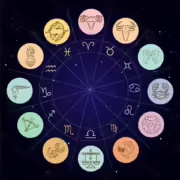
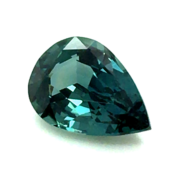
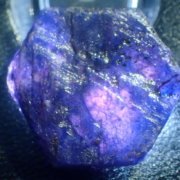
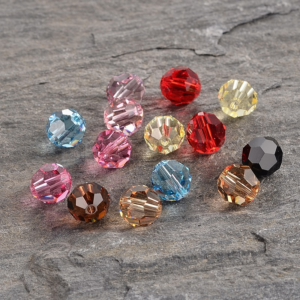
Leave a Reply
Want to join the discussion?Feel free to contribute!